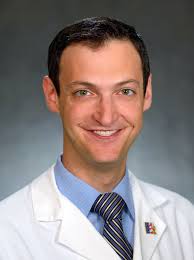Article
Bauml Discusses State of Immunotherapy Biomarkers in NSCLC
Author(s):
Joshua Bauml, MD, discusses the limitations of PD-L1 and tumor mutational burden as immunotherapy biomarkers in non–small cell lung cancer and emerging biomarkers showing promise in the field.
Joshua Bauml, MD, assistant professor of Hematology/Oncology and co-deputy director for the Lung/Head and Neck Medical Oncology Clinical Research Program, Abramson Cancer Center, University of Pennsylvania

Joshua Bauml, MD
Biomarkers are useful for clinicians when deciding the proper treatment of patients with non—small cell lung cancer (NSCLC), explained Joshua Bauml, MD, but there are several limitations to the two most frequently used biomarkers in the current landscape.
Bauml said that the biomarkers PD-L1 and tumor mutational burden (TMB) leave “a lot on the table” in terms of predicting and understanding patient response. Two emerging biomarkers—gene expression profiling and T-cell exhaustion profiling—might be better methods, he said.
OncLive: What are some main points from your presentation that you hope the audience took home?
In an interview during the 2018 OncLive® State of the Science Summit™ on Non—Small Cell Lung Cancer, Bauml, assistant professor, Perelman School of Medicine, University of Pennsylvania, and chair of the meeting, discussed the limitations of PD-L1 and TMB as immunotherapy biomarkers in NSCLC and emerging biomarkers showing promise in the field.Bauml: Immunotherapy has changed the landscape of how we treat lung cancer and it has been very exciting. Unfortunately, not everyone responds to immunotherapy and, in fact, even in a heavily preselected group, the response rate to pembrolizumab (Keytruda) only remained at about 50%. This is not what we are able to achieve with targeted therapies. The available biomarkers—and here we are talking about PD-L1, and more recently, TMB—these are what we call “surrogate” biomarkers. They are getting at something that might imply a response, but they are not a direct understanding of what is happening in the body or what is leading to these drugs working.
What I tried to do in my presentation is discuss some of the limitations of PD-L1 and TMB so that clinicians can interpret these tests appropriately and recognize the strengths and weaknesses. Also, I described some emerging biomarkers that actually change the way we use these drugs.
The two biomarkers that I specifically spoke about today are gene expression profiling and T-cell exhaustion profiling. The first one is looking at RNA expression of various genes. There has been accordance of this in PD-L1. It has the potential to be more instructive of response to immunotherapy than PD-L1 alone.
Although, in the IMpower150 trial, researchers found that it was not much better than PD-L1 alone. T-cell exhaustion profiling is just coming onto the scene. This evaluates certain features of the T cells, which shows that they might be unable to do their job and fight the disease.
Will any of these methods be tested in clinical trials?
Can you share more insight on the limitations of PD-L1 and TMB?
All of this research is in fairly early stages, but it is an exciting time right now for immunotherapy. Gene expression profiling is something that has already been included in many clinical trials. T-cell exhaustion profiling is more in the early days [of research], but it is something we are working on at the University of Pennsylvania. TMB has been worked on quite a bit; it has been reported on in a lot of next-generation sequencing assays. I spoke about the concern about the measurability of TMB results from one assay to the next. That is something we need to normalize. PD-L1, to me, has all of the bad limitations of a biomarker. You want a biomarker to be stable over time and consistent throughout as much of the tumor as you possibly can. To me, the best biomarker we deal with in lung cancer is EGFR mutation. If a patient has an EGFR mutation, all parts of the tumor will have that mutation and it will be consistent. It does not matter what method of biopsy you use, you will be able to find it. In contrast, PD-L1 changes over time and it's heterogeneous.
Are there specific biomarkers to suggest who might respond best to combinations with immunotherapy?
TMB, similarly, is a surrogate biomarker. It is an indication of how much antigen there is in the tumor. Regarding the limitation, how do we measure it? That is complex. The other factor that comes up here is that we are counting the mutations; not every mutation is created equally. That is really the key next step. What we know from data are that in patients who have a high TMB, nivolumab plus ipilimumab is superior to chemotherapy. We do not know the impact of TMB on response to chemotherapy/immunotherapy. We do not know the relative importance of these biomarkers. How to use the biomarkers we have and develop future biomarkers, is what we need to focus on.








%20(2)%201-Recovered-Recovered-Recovered-Recovered-Recovered.jpg?fit=crop&auto=format)